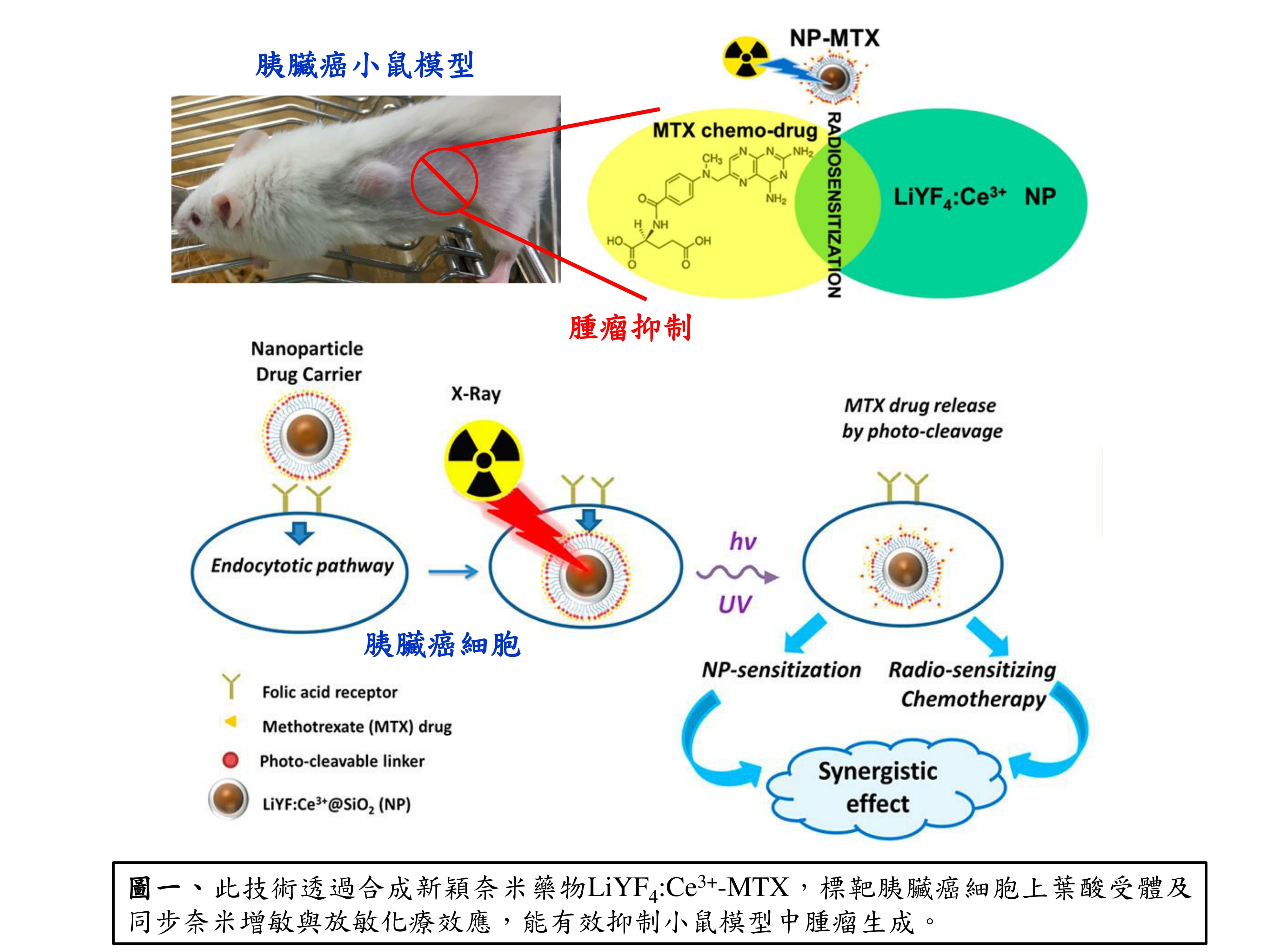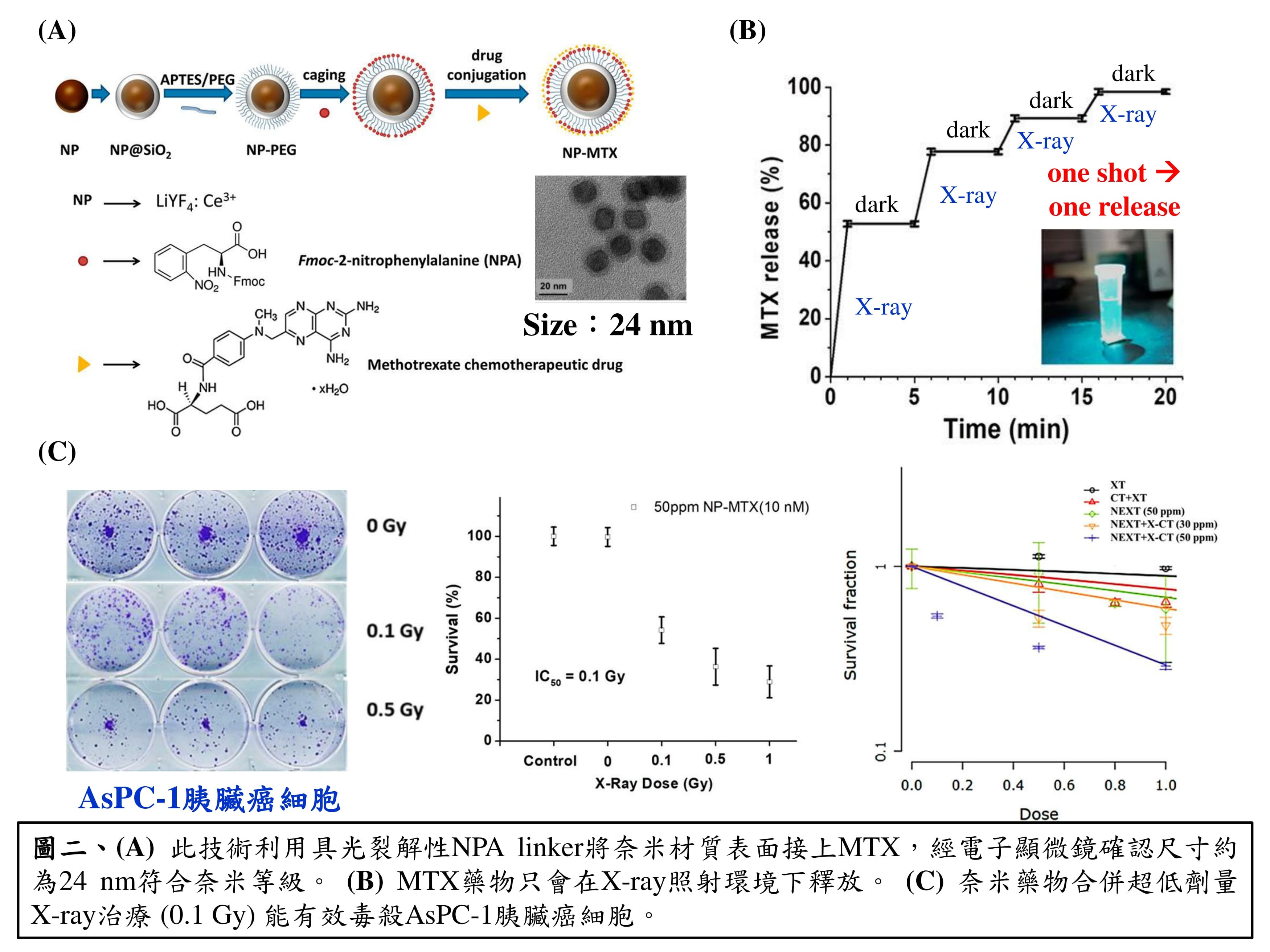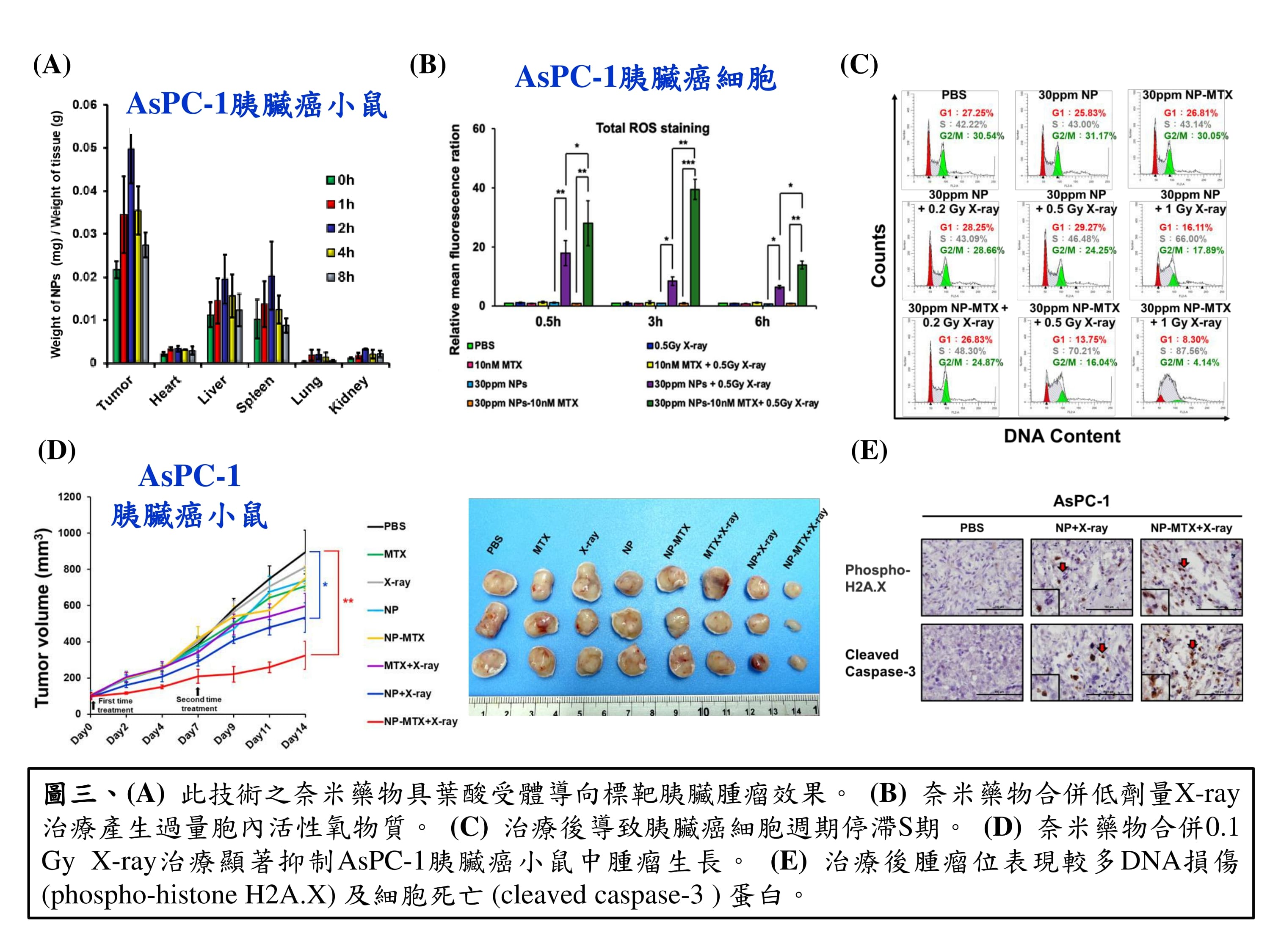| Technical Name | 未來放射醫療新趨勢-運用葉酸接受器導引併放射線控制釋放之智慧奈米,以達成「超低X-ray劑量-0.1Gy」治療胰臟癌 | ||
|---|---|---|---|
| Project Operator | Institute of Clinical Medicine, National Cheng Kung University | ||
| Project Host | 蘇文彬醫師/葉晨聖老師 | ||
| Summary | We have synthesized the LiYF4:Ce3+ nanoparticles – Methotrexate (MTX), targeting pancreatic cancer cells via folate receptors. Under ultralow 0.1 Gy X-ray irradiation (the lowest dose in the world, for 2-3 times), the nanoparticles can exhibit radiosensitization effect,radiosensitizing chemotherapy, because of MTX released by X-ray inducing photocleavage of NPA linker. The dual sensitization effect will enhance ROS production, DNA damage, cell cycle S phase arrest in pancreatic cancer cells. We have also demonstrated the excellent efficacy in AsPC-1PANC-1 xenografted pancreatic mice. |
||
| Scientific Breakthrough | The nanoparticle-MTX drug we developed has several characteristics (1) Folate receptor-guided MTX targeting to treat pancreatic cancer (2) X-ray control of MTX releasethen MTX-inducing chemosensitizing radiotherapy (3) Non-high Z metal material as LiYF4: Ce3+ nanomaterials (4) Only need to use the lowest X-ray dose in the world: 0.1Gy, total for 2-3 times, equivalent to 4 times of radiation doses in receiving abdominalpelvic computerized tomography scan, by which can lead to increase ROS production, DNA damage, cell cycle arrest at S phase, eventually pancreatic cancer cell death. |
||
| Industrial Applicability | The nanoparticle-MTX can target deep pancreatic tumor site through folate receptors. Clinically, it would combine ultralow-dose radiotherapy to inhibit tumor growthreduce the side effect of high-dose mono chemotherapyradiotherapy. Synchronization of nanoparticle sensitizationradiosensitizing chemotherapy may significantly prolong the survival of cancer patients. In the future, we will also commercialize this technology through industry-academia cooperation to provide the new nanoplatform for clinical pancreatic tumor treatment. |
||
| Matching Needs | 天使投資人、策略合作夥伴 |
||
| Keyword | Pancreatic cancer ultralow dose X-ray methotrexate folate receptor targeting nanoparticle sensitization X-ray control release chemosensitizing radiotherapy reactive oxygen species DNA damage cell cycle arrest | ||
- wpsu@mail.ncku.edu.tw
other people also saw







